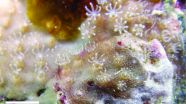(Press-News.org) By growing two types of stem cells in a "3-D culture" and measuring their ability to produce retinal cells, a team lead by St. Jude Children's Research Hospital researchers has found one cell type to be better at producing retinal cells.
The research not only reveals which stem cell type might be better for treating retinal degeneration, but it also demonstrates a standardized method for quantifying the effectiveness of different stem cells for such therapies.
The research was led by Michael Dyer, Ph.D., a member of the St. Jude Department of Developmental Neurobiology and a Howard Hughes Medical Institute investigator. The findings were published in the July 2 edition of the journal Cell Stem Cell.
Stem cells are immature cells that can differentiate into more specialized cells in the body. In early clinical trials, researchers are testing whether stem cells can be differentiated into cells to replace those that are defective and die off in diseases such as age-related macular degeneration, retinitis pigmentosa and Stargardt's disease. Such degeneration is the leading cause of vision loss, affecting more than 10 million people in the U.S.--more than cataracts and glaucoma combined.
While such clinical trials have shown early promise, there are many scientific questions to be answered. "One important question is whether it makes a difference where the stem cells come from," Dyer said. "Our research sought to explore that question and also to learn more about the biology of these stem cells."
The researchers compared two types of stem cells called "induced pluripotent stem cells," which can be generated from adult cells. The stem cells they compared were fibroblast-derived cells generated from skin, and those generated from mature eye cells called rod photoreceptor cells.
Scientists previously thought that induced pluripotent stem cells could not be made from adult neurons without introducing a mutation that switches off a key regulatory gene called p53. Dyer's lab developed a new method for making stem cells from neurons that did not require p53 inactivation. This 3-D culture technique involved surrounding the neurons undergoing reprogramming with normal retinal neurons, to create a more natural environment for producing stem cells from neurons. This technique contrasts with the more common culture technique of growing the cells in layers on culture dishes, which is not successful for such cells. Once the stem cells are produced, they can then be used to make retinal cells in 3-D cultures.
Besides the 3-D culture technique, the researchers also used a set of measurements, called STEM-RET, which enabled them to quantify precisely how successful different retinal cells are in generating retinal cells. Their STEM-RET analysis revealed that the rod-derived stem cells produced more retinal cells than did the fibroblast stem cells. The fibroblast-derived retinal cells were missing some cell types needed for fully functional retinas.
Dyer and his colleagues also explored the biological differences in the two stem cell types that could explain their differences in producing retinal cells. Specifically, the researchers analyzed differences in the epigenetic control machinery of the two types. Such epigenetic machinery of cells consists of biological switches that control the cell's genes. These are distinct from the genetic control machinery built into the DNA structure of the cell's genes themselves.
Scientists believe that different stem cell types may retain an "epigenetic memory"--a distinctive set of epigenetic switches, even as they are reprogrammed from mature cell types. This "memory" affects how well the stem cells produce different cell types.
In their analysis of the retinal cells, the researchers detected a type of epigenetic switch, called CTCF, which contributes to the epigenetic memory of the rod-derived stem cells. This epigenetic switch, they believe, could play a role in making the rod stem cells a superior source of retinal cells.
Dyer said that STEM-RET scoring of stem cells represents a significant advance in determining which stem cells to use in retinal stem cell therapies. "There has long been a debate in the field about how to standardize the quantification of stem cell differentiation," he said. "Our STEM-RET method enables that standardization, which means that laboratories can accurately compare their results with one another and different stem cell lines can be compared with one another. We believe the method could be adopted widely."
Epigenetic analysis of such stem cells could lead to "epigenetic fingerprints" characterizing different stem cell types. "Such fingerprints would tell researchers which stem cell lines would most likely be effective in making retinal cells, bone marrow cells or other types of mature cells for therapeutic purposes," Dyer said.
The 3-D culture technique and STEM-RET measurement protocol allow scientists to manipulate stem cells genetically and with drugs to discover ways to better reprogram the cells into functional mature cells for therapeutic use.
INFORMATION:
The other authors are Daniel Hiler, Jiakun Zhang, Jongrye Jeon, Lyra Griffiths, Xiang Chen, Chunxu Qu, Beisi Xu, David Finkelstein and Sharon Frase, all of St. Jude; Dianna Johnson, University of Tennessee Health Science Center; Jennifer Hazen, Robert Eisenman, Kristin Baldwin, Sergey Kupriyanov, Alberto Rodriguez and Greg Martin, The Scripps Research Institute; and Patrick Carroll, Fred Hutchinson Cancer Research Center.
The research was supported by the National Institutes of Health, HHMI, Alex's Lemonade Stand Foundation for Childhood Cancer and ALSAC.
Astronauts on the International Space Station (ISS) have a number of exercise options, including a mechanical bicycle bolted to the floor, a weightlifting machine strapped to the wall, and a strap-down treadmill. They spend a significant portion of each day working out to ward off the long-term effects of weightlessness, but many still suffer bone loss, muscle atrophy, and issues with balance and their cardiovascular systems.
To counteract such debilitating effects, research groups around the world are investigating artificial gravity -- the notion that astronauts, ...
The latest Supplement to the American Ornithologists' Union Check-list of North American Birds was published this week in The Auk: Ornithological Advances, and includes several major updates to the organization of the continent's bird species. More than just a list, the Check-list groups birds into genera, families, and orders based on their evolutionary relationships, and some of the most significant changes in this year's Supplement involve the tanagers, family Thraupidae. "Recent genetic studies have overturned much of what we thought we knew about what constitutes a ...
July 2, 2015 - While heart disease is the number one cause of death in both sexes, it poses special considerations in women--with risks often beginning in childhood and changing at different stages of life. Insights on cardiovascular disease (CVD) risk in women and girls throughout the life span are shared in a special symposium feature in the June issue of The American Journal of Medical Sciences (AJMS). The official journal of the Southern Society for Clinical Investigation (SSCI), AJMS is published by Wolters Kluwer.
Two symposium papers seek to increase understanding ...
ATLANTA - July 2, 2015-Cancer survivors who smoke report fewer negative opinions about smoking, have more barriers to quitting, and are around other smokers more often than survivors who had quit before or after their diagnosis, according to a new study appearing in Psycho-Oncology. The authors say these factors point to potential targets to help cancer survivors quit.
Quitting smoking is important for cancer prognosis, but some cancer survivors continue to smoke. Although initial quit rates are high among those diagnosed with cancers strongly linked with smoking (e.g., ...
A group of scientists led by Dr Kara Hoover of the University of Alaska Fairbanks and including Professor Matthew Cobb of The University of Manchester, has studied how our sense of smell has evolved, and has even reconstructed how a long-extinct human relative would have been able to smell.
The sense of smell plays a decisive role in human societies, as it is linked to our taste for food, as well as our identification of pleasant and unpleasant substances.
We have about 4 million smell cells in our noses, divided into about 400 different types. There is tremendous ...
CORVALLIS, Ore. - Engineers at Oregon State University have invented a way to fabricate silver, a highly conductive metal, for printed electronics that are produced at room temperature.
There may be broad applications in microelectronics, sensors, energy devices, low emissivity coatings and even transparent displays.
A patent has been applied for on the technology, which is now available for further commercial development. The findings were reported in Journal of Materials Chemistry C.
Silver has long been considered for the advantages it offers in electronic devices. ...
Research conducted in Okinawa, Japan, by graduate student Yu Miyazaki and associate professor James Davis Reimer from the University of the Ryukyus has found a very unusual new species of octocoral from a shallow coral reef in Okinawa, Japan. The new species can be considered a "living fossil", and is related in many ways to the unusual blue coral. The study was published in the open access journal ZooKeys.
Unlike scleractinians, most octocorals lack a hard skeleton, and therefore many have the common name "soft coral". One exception is the endangered genus Heliopora, ...
COLUMBIA, Mo. - For years, news organizations that post content on the Internet have allowed readers to leave comments about stories. Often, these readers' comments become a forum for political debates and other communication that the news organizations do not consider important to their journalistic practices. Now, researchers from the University of Missouri School of Journalism have found that editors and owners of news organizations may want to pay more attention to what their readers are saying about their news stories in order to better serve their consumers. Timothy ...
CLEMSON, S.C. -- Poor sleep habits can have a negative effect on self-control, which presents risks to individuals' personal and professional lives, according to Clemson University researchers.
In a study titled "Interactions between Sleep Habits and Self-Control," Clemson psychologists concluded a sleep-deprived individual is at increased risk for succumbing to impulsive desires, inattentiveness and questionable decision-making.
"Self-control is part of daily decision-making. When presented with conflicting desires and opportunities, self-control allows one to maintain ...
PROVIDENCE, R.I. [Brown University] -- Everyone knows that exercise generally helps the cardiovascular system, but much remains unknown about how the benefits arise, and what to expect in different people who exercise to improve their health. To gain a more precise understanding of how exercise improves health and whom it helps most, researchers analyzed the results of 160 randomized clinical trials with nearly 7,500 participants. The review appears open access in the Journal of the American Heart Association.
"Our meta-analysis is one of the first studies to systematically ...

